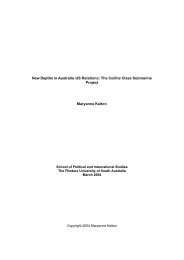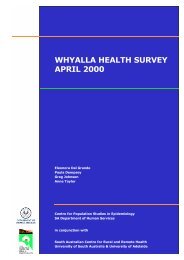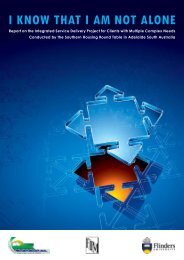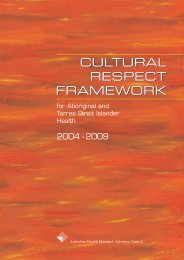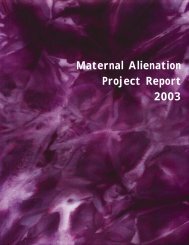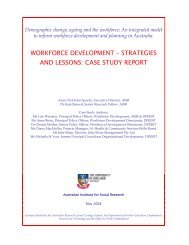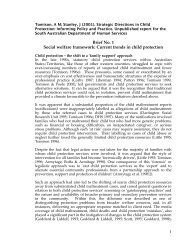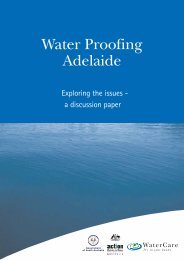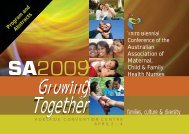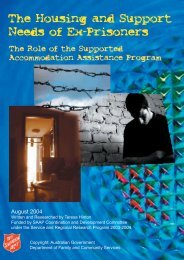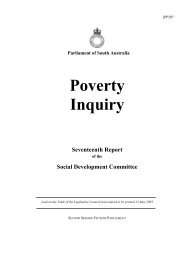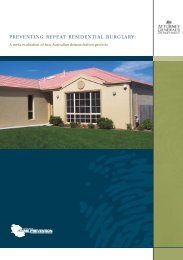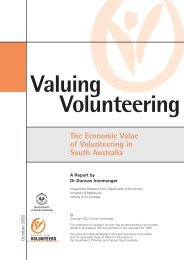Brief No. 2 Social welfare framework - Australian Institute of Family ...
Brief No. 2 Social welfare framework - Australian Institute of Family ...
Brief No. 2 Social welfare framework - Australian Institute of Family ...
You also want an ePaper? Increase the reach of your titles
YUMPU automatically turns print PDFs into web optimized ePapers that Google loves.
Services <strong>of</strong> the protective system<br />
<strong>Family</strong> preservation<br />
Blake, Carlus & Campbell (1995)<br />
Families First is a service initially modelled on the United States<br />
Homebuilders form <strong>of</strong> the intensive family based services that have been over<br />
almost two decades part <strong>of</strong> a major policy drive to arrest the rise <strong>of</strong> children<br />
entering substitute care and to shift the emphasis from funding substitute care<br />
services to funding those services which ‘preserve families’. The theme <strong>of</strong> this<br />
presentation is collaboration between the state bureaucracy responsible for child<br />
protection and substitute care, non-government agencies also engaged with these<br />
families, and families themselves. It briefly tells <strong>of</strong> the development <strong>of</strong> the Families<br />
First program in Victoria, outlines characteristics <strong>of</strong> the program, and describes<br />
some <strong>of</strong> the experiences <strong>of</strong> the program and the issues confronting its development<br />
within the spectrum <strong>of</strong> services to children and families. An attachment focuses on<br />
tasks <strong>of</strong> cooperation, listing issues to consider at key stages in the interests <strong>of</strong><br />
building trust, establishing mutual accountability, and assisting ethical behaviour.<br />
Campbell (1998)<br />
Victoria’s Families First pilot intensive family preservation service was established<br />
with the intent <strong>of</strong> following the Homebuilders model <strong>of</strong> IFPS. This article presents<br />
an overview and evaluation <strong>of</strong> the pilot and its results, makes observations on<br />
subsequent developments, and highlights considerations in adapting such<br />
programs to different cultures and service systems.<br />
Cashmore & Paxman (1996)<br />
This study provides a review <strong>of</strong> selected literature and examines the models <strong>of</strong><br />
home-based family preservation services which have gained prominence as an<br />
alternative to out-<strong>of</strong>-home care for children who are likely to be removed from<br />
home because <strong>of</strong> the risk <strong>of</strong> abuse and neglect. Factors which make such schemes<br />
attractive in the present climate <strong>of</strong> family centred ideology are identified. A<br />
detailed synthesis <strong>of</strong> the findings <strong>of</strong> evaluation studies conducted predominantly<br />
in the United States is provided. Issues explored include: how success is to be<br />
measured; the need for long-term follow up; evaluations which include genuine<br />
comparison groups; and how cost effective is family preservation. Findings<br />
highlight the need for further refinement in regard to outcome measures and<br />
identification <strong>of</strong> the aspects <strong>of</strong> the programs that are more or less effective with<br />
different groups <strong>of</strong> families. Serious questions are raised about the implications <strong>of</strong><br />
importing programs which were not designed for the <strong>Australian</strong> social and<br />
cultural context. An overview <strong>of</strong> evaluation studies, their methodology and<br />
findings is provided.<br />
32



